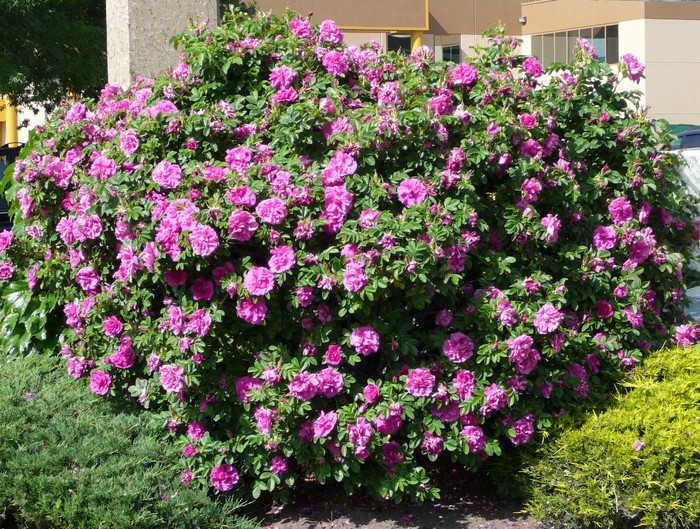

Rosa rugosa 'Hansa' is a vigorous, upright, suckering shrub boasting a profusion of remarkably fragrant, double, large, 4 in. across (10 cm), rich pinkish-purple flowers (17-25 petals) from early summer up to the first frost. They are followed by edible fruits that are as pretty as the flowers themselves. Resembling cherry tomatoes, the strike and ng scarlet rose hips, provide a beautiful contrast against the foliage of dark green leaves. The rose hips may be used to make jams and jellies. If left on the shrub, they might persist into winter to the delight of hungry birds who will feast on them during the winter months. Reliable, drought, and learned this easy-care shrub rose is wonderful when used as a specimen, flowering hedge or in the mixed border.
| Requirement | |
|---|---|
| Hardiness | 3,4,5,6,7,8 |
| Heat Zones | 1,2,3,4,5,6,7,8,9 |
| Climate Zones | 1, 2, 3, 4, 5, 6, 7, 8, 9, 10, 11, 12, 13, 14, 15, 16, 17, 18, 19, 20, 21, 22, 23, 24, A1, 1B, 2A, 2B, 3A, A2, A3, 1A, 3B |
| Plant Type | Roses, Shrubs |
| Plant Family | Rosacea |
| Exposure | Full Sun, Partial Sun |
| Season of Interest | Summer, Fall, Winter, Early Summer, Mid Summer, Late Summer |
| Height | 4' - 5' |
| Spread | 3' - 4' |
| Water Needs | Average |
| Maintenance | Average |
| Soil Type | Chalk, Clay, Loam, Sand |
| Characteristics | Fragrant, Showy, Fruit & Berries |
| Garden Styles | Coastal Garden, Informal and Cottage, Traditional Garden |
| Planting Place | Beds and Borders, Hedges and Screens |